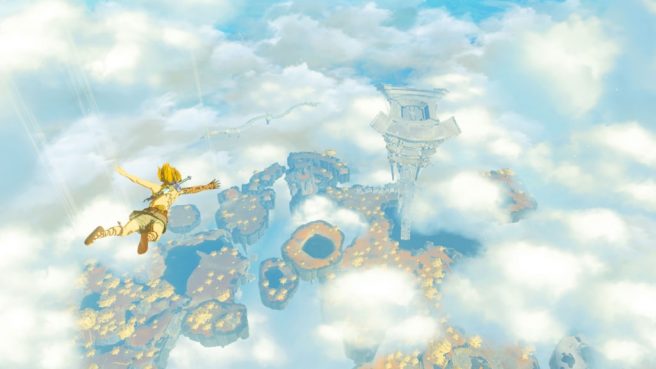Nintendo explains how the devs got Zelda: Tears of the Kingdom to load seamlessly
The Legend of Zelda: Tears of the Kingdom features a massive world, yet loading isn’t something players need to worry about as they move throughout Hyrule. Even as you go from the sky to the Depths, everything happens seamlessly. Now as part of a Computer Entertainment Development Conference (CEDEC) talk, we’re able to learn more about how this was accomplished.
While Breath of the Wild was originally targeting Wii U and featured a world based on a flat 2D structure, Nintendo took things to another level now that it was working with more powerful Switch hardware only. However, things were far from easy. As reported by Famitsu and shared by Automaton, one issue the developers needed to deal with early on was long loading between the surface and the underground, which caused the game to freeze on occasion.
Among the tactics Nintendo used to address the issue was taking advantage of a profiling tool in order to measure and analyze the game’s performance. Doing so let the team become aware of the objects that were taking the longest time to load and preventing seamless transitions. These objects were then allocated to “blank time”, and would only load when no other loading was taking place. Data that wasn’t immediately needed was put off as well.
On top of this, the developers attempted to scale back the number of files that need to be loaded. The team came up with a system that identified which objects and parts of the terrain would not be a part the player’s field of view, which is based on Link’s position. Some textures also saw a lower resolution, assuming there won’t be a negative impact.
Along with everything just mentioned, Nintendo came up with a way to get a head start on loading. The game is able to find all files needed for loading before the player goes underground. Loading then happens once the player comes across “a possible waypoint to the underground” like a large hole in the ground.
The islands in the sky used similar prediction methods as well. Islands were split up into large ones related to the storyline, others that serve as a transit point to other islands, and islands with challenges, such as “How do I go there?” The game is then able to decide which islands to load (or unload in favor of another one) based on the player’s actions and location.
Something else discussed during that talk is a Rupee Bulletin Board the team used throughout development. You can read about that here.
